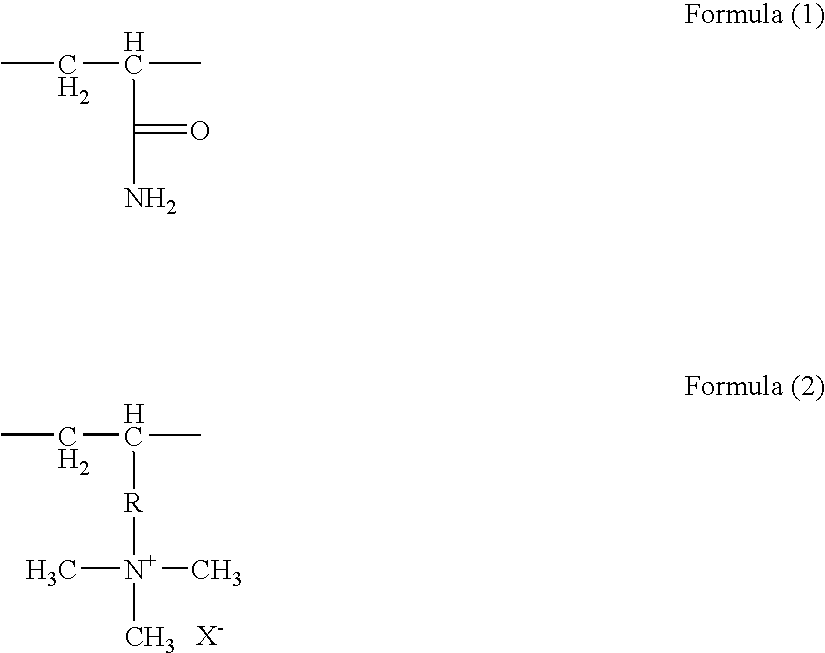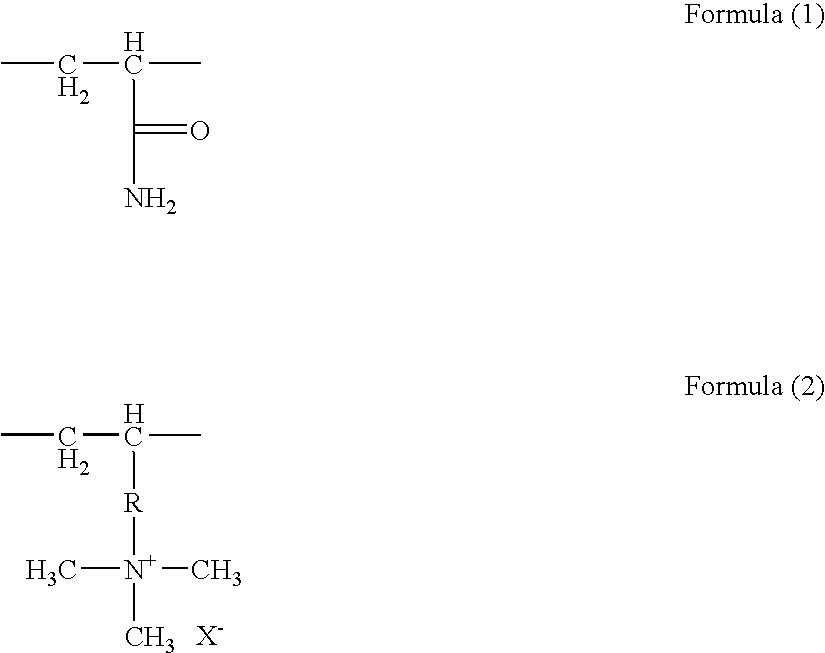Microporous coating based on polyurethane polyurea
a technology of polyurethane and microporous coating, applied in the direction of polyurea/polyurethane coating, coating, etc., can solve the problems of large solvent working up and recycling, complex measures that are necessary for safe handling, and high technical cos
- Summary
- Abstract
- Description
- Claims
- Application Information
AI Technical Summary
Benefits of technology
Problems solved by technology
Method used
Image
Examples
example 1
PUR dispersion (component I)
[0191] 144.5 g of Desmophen® C2200, 188.3 g of PolyTHF® 2000, 71.3 g of PolyTHF® 1000 and 13.5 g of Polyether LB 25 were heated to 70° C. A mixture of 42.5 g of hexamethylene diisocyanate and 59.8 g of isophorone diisocyanate was then added at 70° C. in the course of 5 minutes, and stirring was carried out under reflux until the theoretical NCO value had been reached. The finished prepolymer was dissolved with 1040 g of acetone at 50° C., and then a solution of 1.8 g of hydrazine hydrate, 9.18 g of diaminosulfonate and 41.9 g of water was added in the course of 10 minutes. The after-stirring time was 10 minutes. After addition of a solution of 21.3 g of isophoronediamine and 106.8 g of water, dispersion was carried out in the course of 10 minutes by addition of 254 g of water. The solvent was removed by distillation in vacuo.
[0192] The resulting white dispersion had the following properties:
Solids content:60%Particle size (LCS):285 nm
example 2
PUR dispersion (component I)
[0193] 2159.6 g of a difunctional polyester polyol based on adipic acid, neopentyl glycol and hexanediol (mean molecular weight 1700 g / mol., OH number=66), 72.9 g of a monofunctional polyether based on ethylene oxide / propylene oxide (70 / 30) (mean molecular weight 2250 g / mol., OH number 25 mg KOH / g) were heated to 65° C. A mixture of 241.8 g of hexamethylene diisocyanate and 320.1 g of isophorone diisocyanate was then added at 65° C. in the course of 5 minutes, and stirring was carried out at 100° C. until the theoretical NCO value of 4.79 % had been reached. The finished prepolymer was dissolved with 4990 g of acetone at 50° C., and then a solution of 187.1 g of isophoronediamine and 322.7 g of acetone was added in the course of 2 minutes. The after-stirring time was 5 minutes. A solution of 63.6 g of diaminosulfonate, 6.5 g of hydrazine hydrate and 331.7 g of water was then added in the course of 5 minutes. Dispersion was carried out by addition of 1640...
example 3
PUR dispersion (component I)
[0195] 2210.0 g of a difunctional polyester polyol based on adipic acid, neopentyl glycol and hexanediol (mean molecular weight 1700 g / mol., OH number=66) was heated to 65° C. A mixture of 195.5 g of hexamethylene diisocyanate and 258.3 g of isophorone diisocyanate was then added at 65° C. in the course of 5 minutes, and stirring was carried out at 100° C. until the theoretical NCO value of 3.24% had been reached. The finished prepolymer was dissolved with 4800 g of acetone at 50° C., and then a solution of 29.7 g of ethylenediamine, 95.7 g of diaminosulfonate and 602 g of water was added in the course of 5 minutes. The after-stirring time was 15 minutes. Dispersion was then carried out in the course of 20 minutes by addition of 1169 g of water. The solvent was removed by distillation in vacuo.
[0196] The resulting white dispersion had the following properties:
Solids content:60%Particle size (LCS):278 nm
PUM
| Property | Measurement | Unit |
|---|---|---|
| density | aaaaa | aaaaa |
| temperatures | aaaaa | aaaaa |
| number-average particle size | aaaaa | aaaaa |
Abstract
Description
Claims
Application Information
 Login to View More
Login to View More - R&D
- Intellectual Property
- Life Sciences
- Materials
- Tech Scout
- Unparalleled Data Quality
- Higher Quality Content
- 60% Fewer Hallucinations
Browse by: Latest US Patents, China's latest patents, Technical Efficacy Thesaurus, Application Domain, Technology Topic, Popular Technical Reports.
© 2025 PatSnap. All rights reserved.Legal|Privacy policy|Modern Slavery Act Transparency Statement|Sitemap|About US| Contact US: help@patsnap.com



